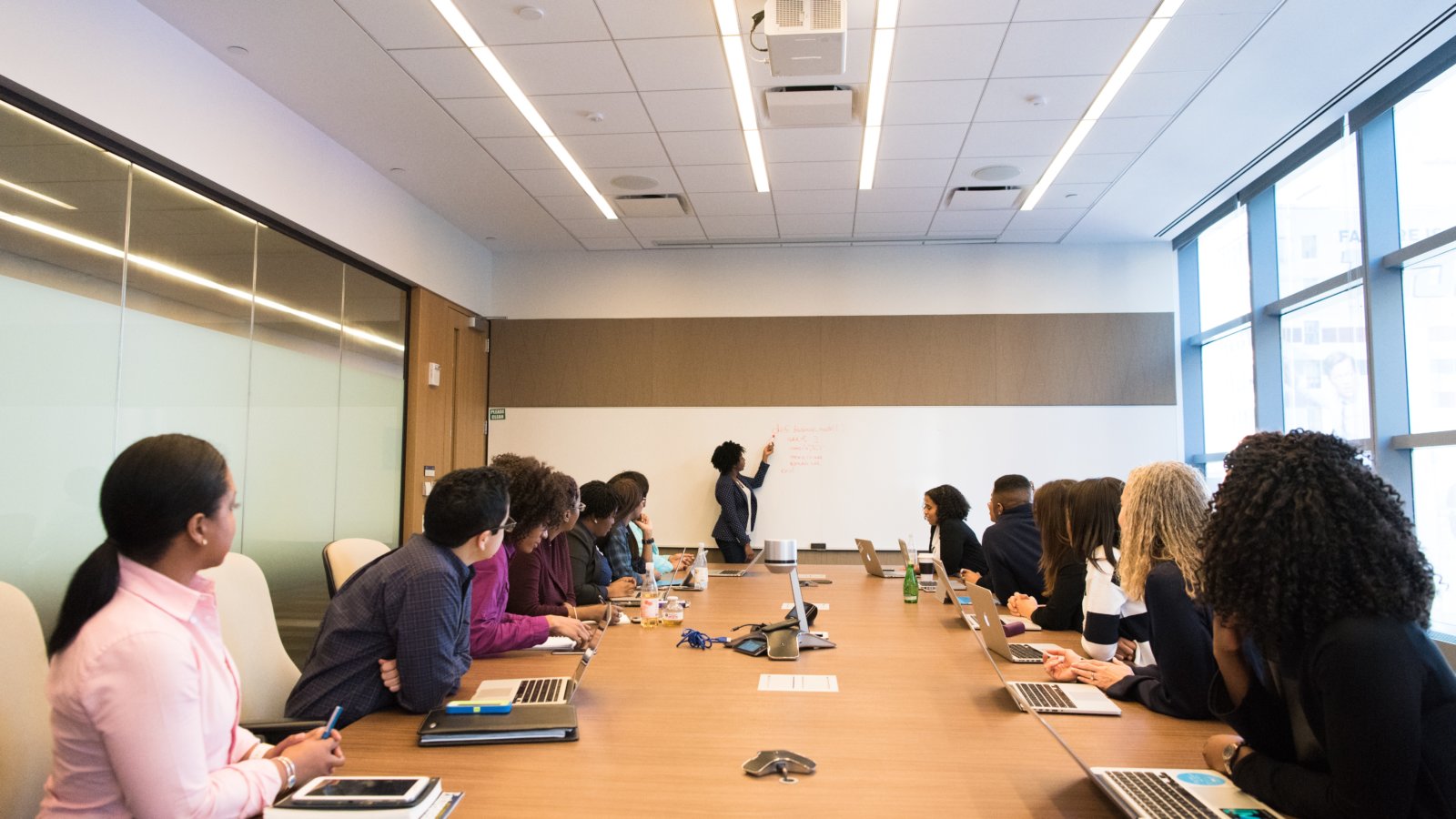We have certainly had experiences where we’ve attended meetings that are a waste of our time, seemingly pointless, disengaging, and without purpose and outcomes. Many workers report ‘meetings’ as a time waster or barrier to completing job duties. Yet, well-planned and executed meetings do serve several important purposes in organizations:
- Meetings can be essential to clarify an organization’s vision, direction, values, strategies, and goals among team members.
- Meetings are a primary tool to facilitate problem-solving, decision-making, process improvement, idea generation, and collection of best practices.
- Meetings can be an effective vehicle to share relevant and timely information and allow a forum for questions and input, facilitating a common understanding.
- Meetings can be a vehicle for building team relationships.
- Meetings can be an efficient forum for any of the above purposes over the telephone or electronic communications.
- The ability to plan and facilitate a valuable meeting can be seen as an indication of leadership skills.
So, what are the common mistakes of people who plan and execute meetings? Some are obvious, including:
- Calling a team meeting when another form of communication (phone or email) or an individual conversation is more appropriate.
- Need to be clearer on the meeting’s purpose, objectives, and outcomes.
- Inviting people to meetings who do not need to be there (they don’t require the information, they won’t have relevant input, and they can not act on the outcomes)
- Not setting a clear plan with topics and timelines.
- Allowing a meeting to go off-track from the purpose, agenda, and timing.
- Refrain from concluding with clear action items, decisions, and accountabilities for the next steps.
- Need to follow up in the next meeting on a previous action plan.
Here are ten tips to achieve high levels of productivity and satisfaction in your meetings.
- Use Meetings Properly
Business meetings are not social functions. They are serious “business” functions. Don’t just have a meeting for the sake of meeting. Use meetings for decision-making, problem-solving, or some other type of ideation process. Information that doesn’t need face-face interaction is best communicated in textual or video status reports.
- Have a Meeting Objective
Have a purpose for your meeting, and make sure it’s not something that is easily covered in an email or short written report. Meetings are excellent venues for making decisions and determining strategies and tactics to accomplish goals. The first step of a meeting is determining the objective of the meeting. Once you have the objective, all the rest of the details fall into place.
- Set an Agenda
To have the most productive meeting, every meeting should have a plan. Set an agenda prior to the meeting and make sure that it is distributed in enough advance time for meeting participants to be prepared. A well-structured schedule helps to keep people on track with the meeting objective and fully engaged in the process.
- Assign Roles
A well-run meeting is structured right down to the role that everyone plays in the meeting. The role structure doesn’t have to be simple. At the minimum, three roles are necessary: 1) Chairperson, 2) Secretary, and 3) Participant. Every person attending the meeting is a Meeting Participant. The Participant should be prepared, focus on the objective of the meeting, and participate by adding value to the discussion.
- Facilitate
A meeting Facilitator is an individual, who focuses on content and process, is substantively neutral, has no decision-making authority, and helps a group to identify and solve problems and make decisions. A good facilitator will ensure that the schedule is being followed and that each agenda item is adequately addressed before moving on to the next agenda item.
- Participate
The most productive meetings are the ones where every meeting member has input into the meeting. The meeting participants have an essential role to fill as well. The participants should prepare for the meeting as if they were making a presentation. This means coming prepared to participate and conduct the appropriate post-meeting activities.
- Prepare
Proper preparation in advance of a meeting is key to successful, productive meetings. The Meeting Chairperson is responsible for all activities relating to the operation and content of the meeting. Other Meeting Participants should be prepared to fill their respective roles, and proper preparation includes a review of the agenda, previous meeting notes, and preparation of materials to present or contribute during the meeting.
8. Be Timely
Meetings that do not have a stated start and end time are doomed to failure. The best way to accomplish punctuality in meetings is to follow the published agenda. If the meeting start time is published at 10:00am, then start at 10:00am. Lastly, end the meeting on time!
9.Assign Action Items
Prior to the completion of the meeting, create a meeting follow-up plan. The best method for creating a follow-up plan is through the use of “action items.” Action items are usually assigned to a meeting participant as an activity that they are responsible for carrying out and then reporting the results of the action back to the group.
10.Conduct a Post-Meeting Analysis
The post-meeting analysis should be conducted by the meeting chairperson. The post-meeting analysis doesn’t have to be complicated. Even few simple questions and the feedback you get will greatly aid in future meeting productivity. The best lessons learned about how to continue to build meeting productivity occur when you solicit feedback from the group.


